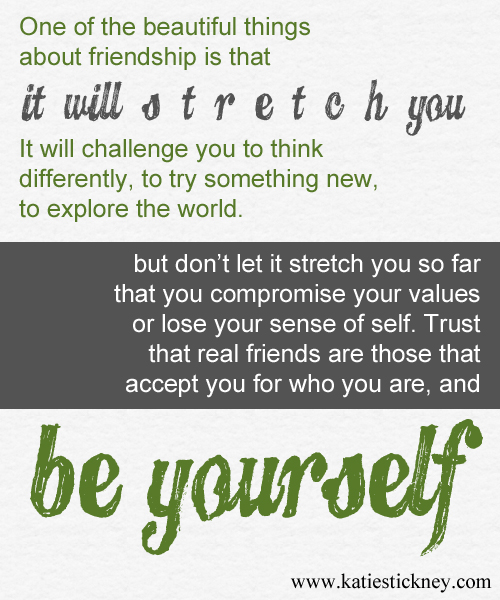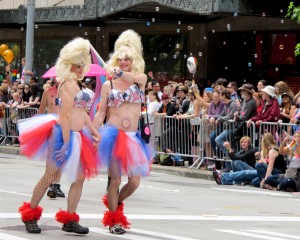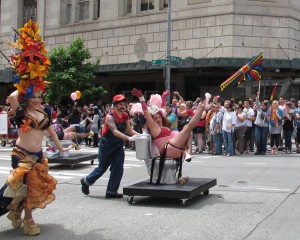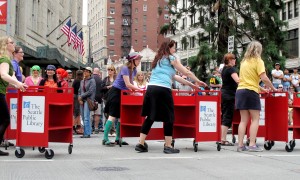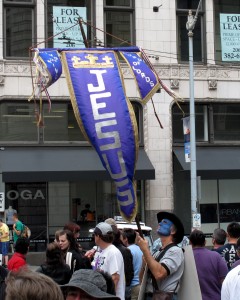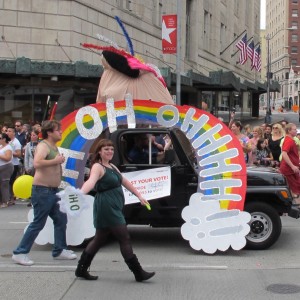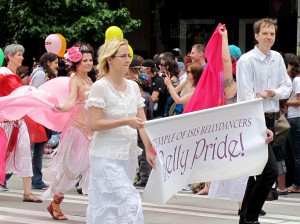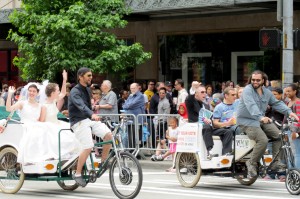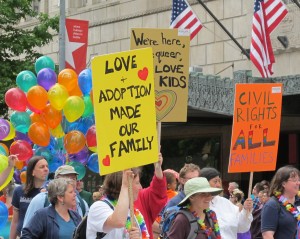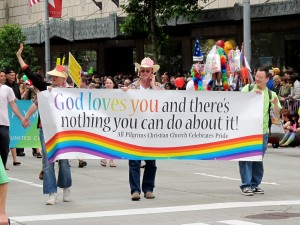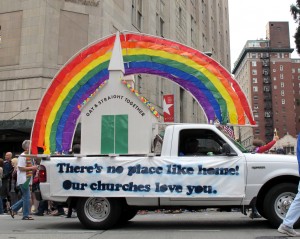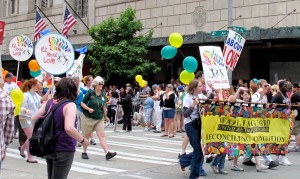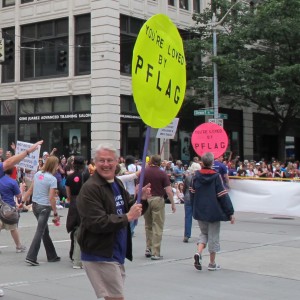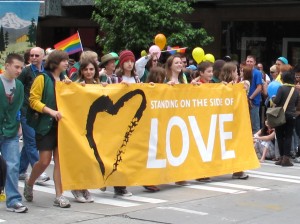
One of several theoretical orientations in which my counseling practice is rooted is that of Health At Every Size. The phrase was coined by Linda Bacon [correction: used by Linda Bacon, but not coined by her, as explained in her comment below] in her book Health At Every Size: The Surprising Truth About Your Weight. The phrase took off and is now used by many folks in a variety of helping professions, particularly health care workers, who have pledged their support for HAES as defined here:
Health at Every Size is based on the simple premise that the best way to improve health is to honor your body. It supports people in adopting health habits for the sake of health and well-being (rather than weight control). Health at Every Size encourages:
- Accepting and respecting the natural diversity of body sizes and shapes.
- Eating in a flexible manner that values pleasure and honors internal cues of hunger, satiety, and appetite.
- Finding the joy in moving one’s body and becoming more physically vital.
From a purely logical standpoint, these principles are wholly uncontroversial.
And yet, somehow it still seems that controversy around these principles, and the theoretical orientation of HAES as a whole, abounds. Those of us who support HAES, and call into question theories, diet plans, studies, etc. that privilege body size/weight over health, offering instead these very reasonable and boringly obvious principles, are routinely responded to with an emotional strength—and sometimes viciousness—that we find surprising. But if we search deep down in ourselves, even some of us HAES supporters and practitioners sometimes have trouble really integrating the principles. We accept them logically, and yet it is hard to really feel like we believe them deep down.
I have given a lot of though to why this might be, and I believe it’s because HAES shines a light into the dark corners where we cling to power and control, and ultimately illuminates our unconscious terror of death.
Now I would bet that I might have just lost you. I would bet that while some of you reading this might agree that you are afraid of death, many of you would say that you do not worry about or fear death, or even really think about it. And I believe that’s true, albeit on a conscious level. But I am not talking about conscious thoughts or worries, I am talking about unconscious anxiety and terror.
One of the things that sets humans apart from other animals is that we have a deep capacity for self-awareness. Self-awareness—being aware of the existence of the self in space and time—brings with it an awareness that we will some day cease to be. That one day we will die. Therapists and philosophers might use the term “existential terror” to discuss the unconscious anxiety this provokes.
And I think this is why conversations about health and body size/weight are so emotionally charged for many of us. We are not conscious about our anxiety that ultimately we are not in control of these bodies in and through which we experience the world. We are not consciously aware of the existential terror that we feel about the prospect that our bodies will get old, broken, ill, and eventually, we will die.
This is all unconscious because facing the reality of the inevitability of illness and death is scary and painful. It is much easier to avoid, ignore, repress that awareness and the feelings that come with it. And one of the best ways to do that is to convince our conscious selves that we are in control. That if we eat the “right” foods, in the “right” amounts, and we move in the “right” ways for the “right” duration, that we will be able to control our bodies. We will be free of illness and injury. The rational part of us is convinced that by doing these “right” things we will die peacefully in our beds at a very old age while we still feel healthy and young. The irrational part somehow believes we won’t die at all if we can be good enough at controlling this body we inhabit.
The problem is that it’s all ultimately an illusion. Careful examination of the real data suggests that the correlation between body size/weight and health is tenuous (recent research covered here, Big Liberty has a great collection of resources here, and I am working on my own list of resources here). Consistently, we are faced with evidence that we cannot control the size of our bodies, as any studies that show weight loss do not include long-term follow up. Consistently, we are faced with the reality that people doing all the “right” things still get sick—they get diabetes, they get cancer, they get injured. And they die. We all die. I will die. You will die.
In terms of rationality, HAES is the only logical way to approach our bodies. HAES says we make good choices insofar as our abilities, finances, time, etc. allow. It says we control what we can control, and we let go of what we can’t control. But the reason that HAES is so controversial is that its boringly obvious and unswervingly rational principles do not ultimately address our underlying terror about illness and death. We have to work through that before we can allow ourselves to let go of what we can’t control, which is that we will get sick and/or old, and we will die.
The cultural myth that we can control our bodies through “right” behaviors is so very powerful because deep down we are terrified that we have no control over our bodies at all, especially the fact that ultimately our bodies will fail us (i.e. die). HAES elicits defensiveness, fear, and anger precisely because it questions that powerful cultural myth. But we don’t have to remain stuck in the anger, fear, and defensiveness, because HAES provides a third way of relating to our bodies. HAES says that we can’t possibly have total control of our bodies, but it’s also not true that we have no control. HAES says there are some things we can control. There are some choices we can make. Choices that support our holistic wellness, including all facets of being human: physical, spiritual, emotional, intellectual, and social.
If your initial reaction to HAES is one of defensiveness, anger, or fear, take a moment to breathe. Take a moment to be present to your feelings. Acknowledge them. Honor them. Feel what it is to be fully human. And see if you can let HAES teach you how to hope. See if you can let it show you that you don’t have to beat your body into submission, or berate yourself for being imperfect. See if you can let it show you that your body is a precious gift that deserves to be treated well and allowed to simply be what it is.
